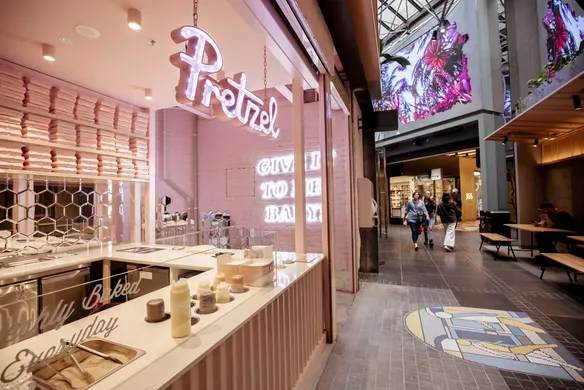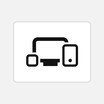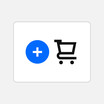It has been four years since Brittany Garbutt turned an old shipping container in the middle of Perth’s nightclub district, Northbridge, into a popular pretzel pitstop. Fast forward to 2020 and her aptly named multi-location operation, Pretzel, now has five stores across Perth and three in Melbourne.
As a former brand designer, Brittany has a very specific vision for her business — it will never be boring! It is a concept that has seen rapid success for her, with seven stores across Australia and an almost 20K strong Instagram following. We caught up with Brittany recently to find out more about her business journey so far, why cash is disappearing, and how she’s tackling operating her multi-state business through a pandemic and regional restrictions.
First, tell us a little bit about the backstory of Pretzel.
My love for pretzels started in my teen years when I worked in a pretzel store that was owned by an older couple. I just loved the combination of sugar, carbs and fun that pretzels could bring to someone’s day. After school I studied design and worked in brand design for a little before I decided to bring my passions together, creating great brands and making pretzels.
Pretzel started with a shipping container in Northbridge, which was a great way to start out as the container setup allowed us to pump out enough volume while also keeping our overheads low. We were strategic with our opening hours in the beginning too, because Northbridge has a vibrant nightlife scene, so we would sell pretzels all night until around 2am. From there we grew a decent following pretty organically, and stated adding more stores to serve different areas.
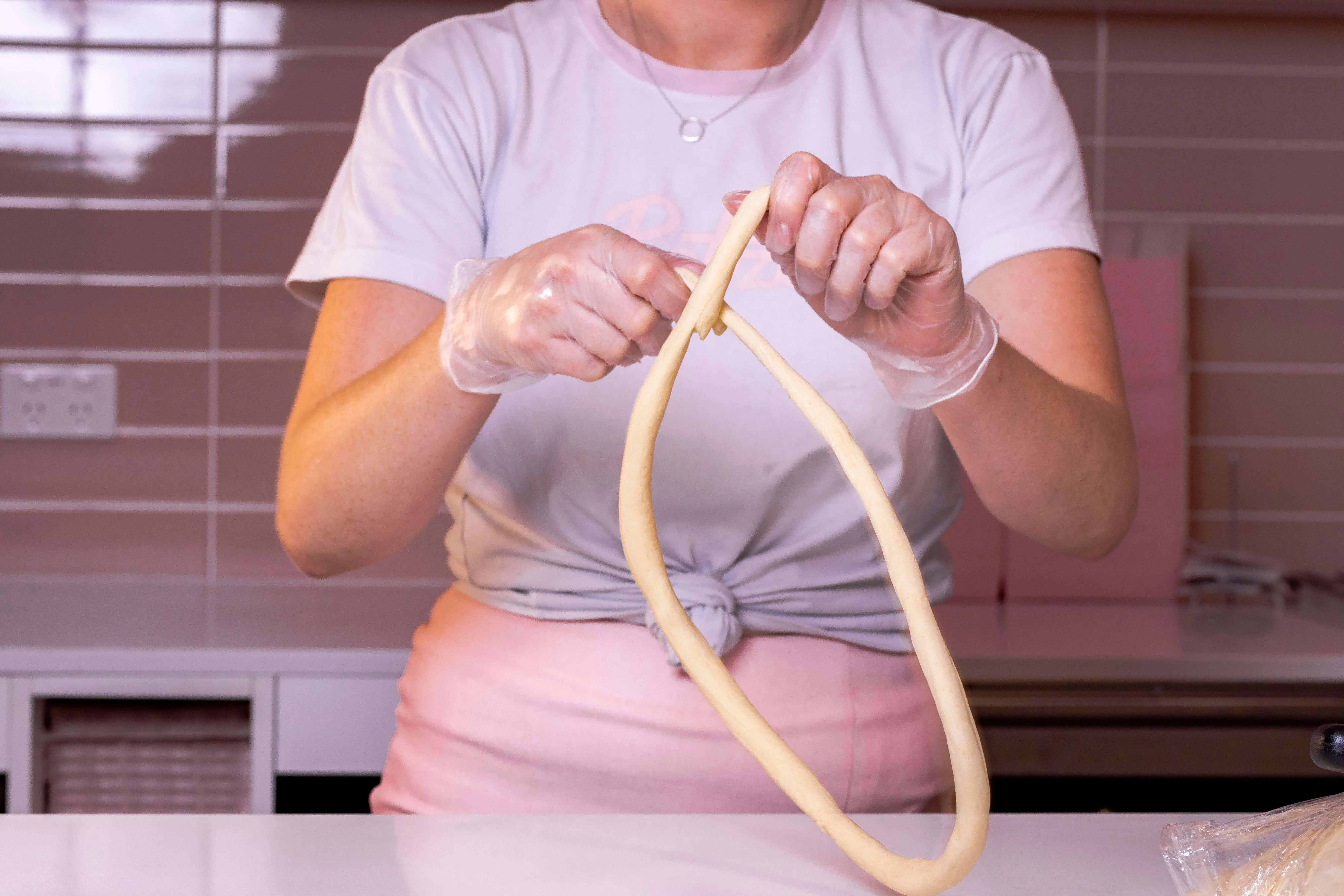
What sets you apart as a brand?
Our brand is just fun! Plain and simple, we use a lot of colour (mainly pink) and interesting concepts to turn our stores into must-see experiences. People aren’t just buying pretzels when they visit us, they’re entering a fun and vibrant world where they immerse themselves in the surroundings, that are all very instagramable.
For example, each of our stores has a different concept attached to it — in Fremantle our store is set-up like a 7-11 convenience store, in Melbourne’s iconic Chapel Street we have a motel theme, and in our new outer-suburban Doncaster store we have channeled Tokyo. Around 70% of our customers who have visited one store actually drive to another location just to have another in-store experience, which I think is pretty unique for a fast-food brand.
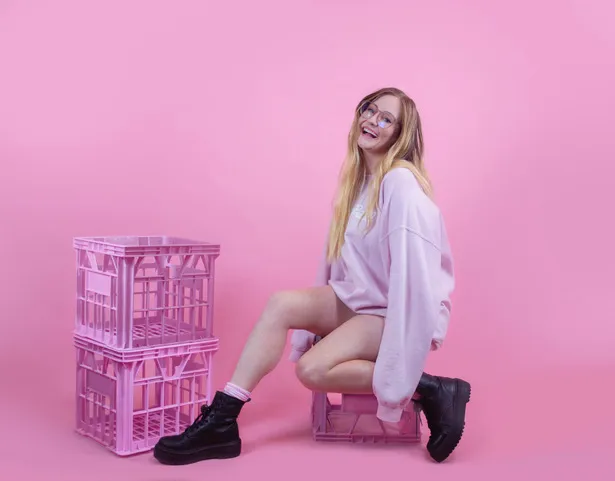
What has been the biggest change for your business since the onset of COVID-19?
When COVID-19 swept across Australia, the biggest change we saw was in consumer behaviour. Our stores were usually full of people but social distancing restrictions meant that we were very limited in the numbers we could have in-store. Our east coast stores have also been more impacted than our west coast stores, particularly right now with the stage 4 lockdown that is in place across greater Melbourne. We’ve had to shut our stores there and do online ordering and offer collect or delivery options only.
In the locations where we’ve remained open, we’ve also noticed a big shift in consumers opting to pay contactless. I did an analysis on my Perth-based stores recently and found that prior to the pandemic we were doing about a 60% card and 40% cash split in sales. Now, our sales are showing a 80% card and 20% cash split. Cash is starting to disappear, and I don’t think it will come back.
Why do you think cash is disappearing?
Honestly, I think cash is disappearing because it is more of a burden for people to access and carry now — plus we have younger generations who are really embracing technology and the ease of banking and payment apps. I’ve noticed a general shift in consumer sentiment towards not using cash over the past couple of years since we started operating, but the onset of this pandemic has sharpened this shift. Now, health concerns are top of mind too, so people don’t want to handle cash that multiple other people have touched.
For businesses, it’s actually a time-saver to not have to deal with cash as well. Having to go to the bank each day to deposit takings and get enough change for the till, relying on staff to count and record cash sales or worrying about security are huge resource and time burdens for a business owner. Contactless or card payments nowadays are simply faster, easier and safer for staff and customers, and I think more business owners are realising this.
What sort of technology have you implemented in your business?
Technology is super important for me because I am managing every part of the business on my own. I use tech to streamline all our processes, from payments to accounting and staff engagement — and the best part is I can do it all from my phone!
I implemented the Square point-of-sale system in our stores so we could take card sales easily but also so that I could track our sales in real-time from the app on my phone. This data has been hugely helpful, especially as we’ve grown and added new locations, I can see how our stores are performing at any given time of the day. We were also able to get Square Online up and running within 24 hours when we had to close our stores due to the pandemic restrictions. Being able to use the same system to take online and in-store orders is great — plus we were able to add click and collect or delivery options for our regular customers who wanted some comfort food during lockdown!
Some of the other tech I have on my phone is a camera security app to monitor stores, an inventory management system where we can track stock by ingredient level, an employee rostering app and Facebook groups where staff can engage on operational updates.
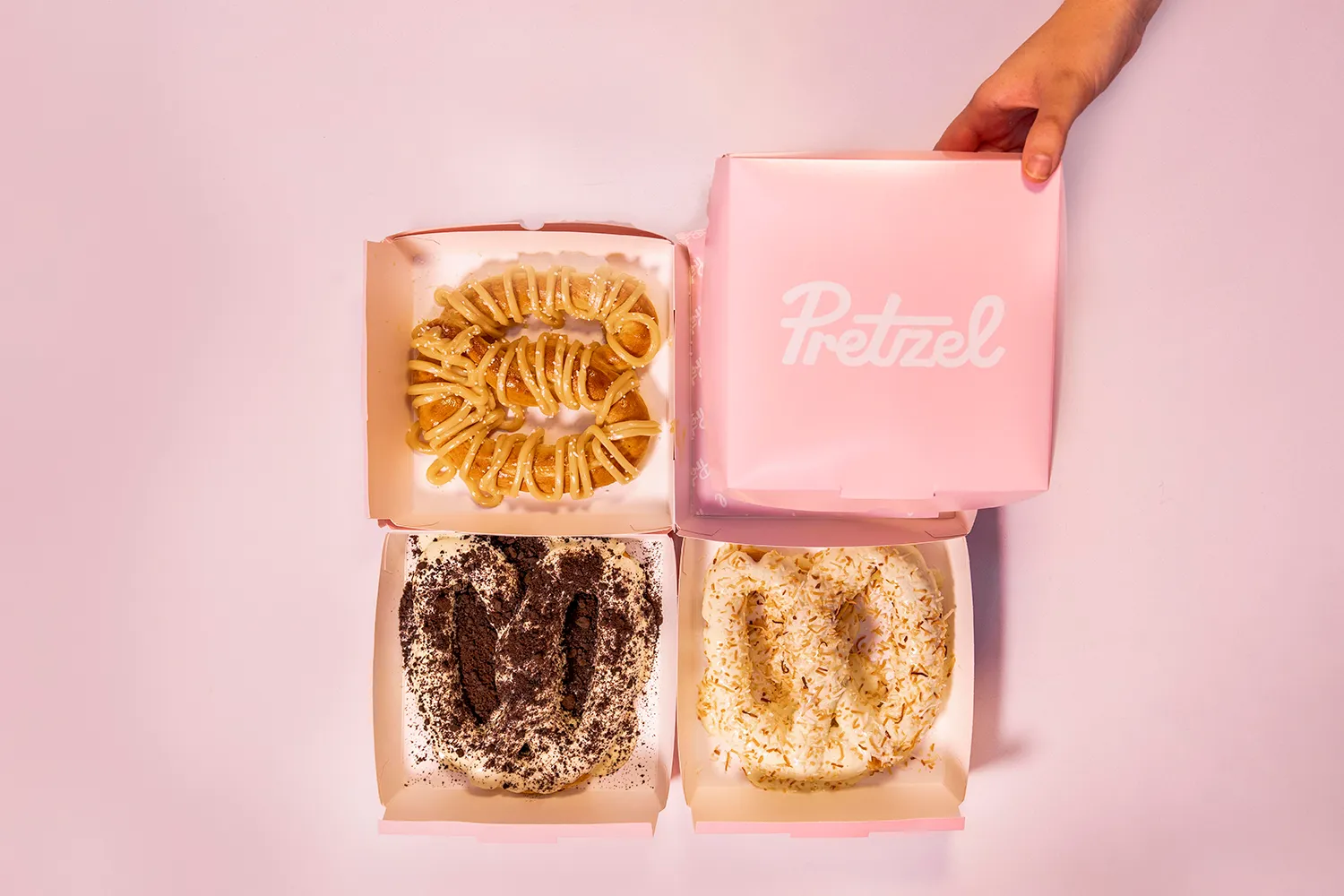
What is your best advice for other budding business owners?
Knowing your audience is critical! I’m in a pretty unique position as a business owner because, being just 26-years-old, I am my own target audience. I know the things that me and my friends want to see if we are going to engage with a brand, and I implement them in my stores. But no matter what service or product you’re offering, you need to know who your key audience is and what they want.
![]()

